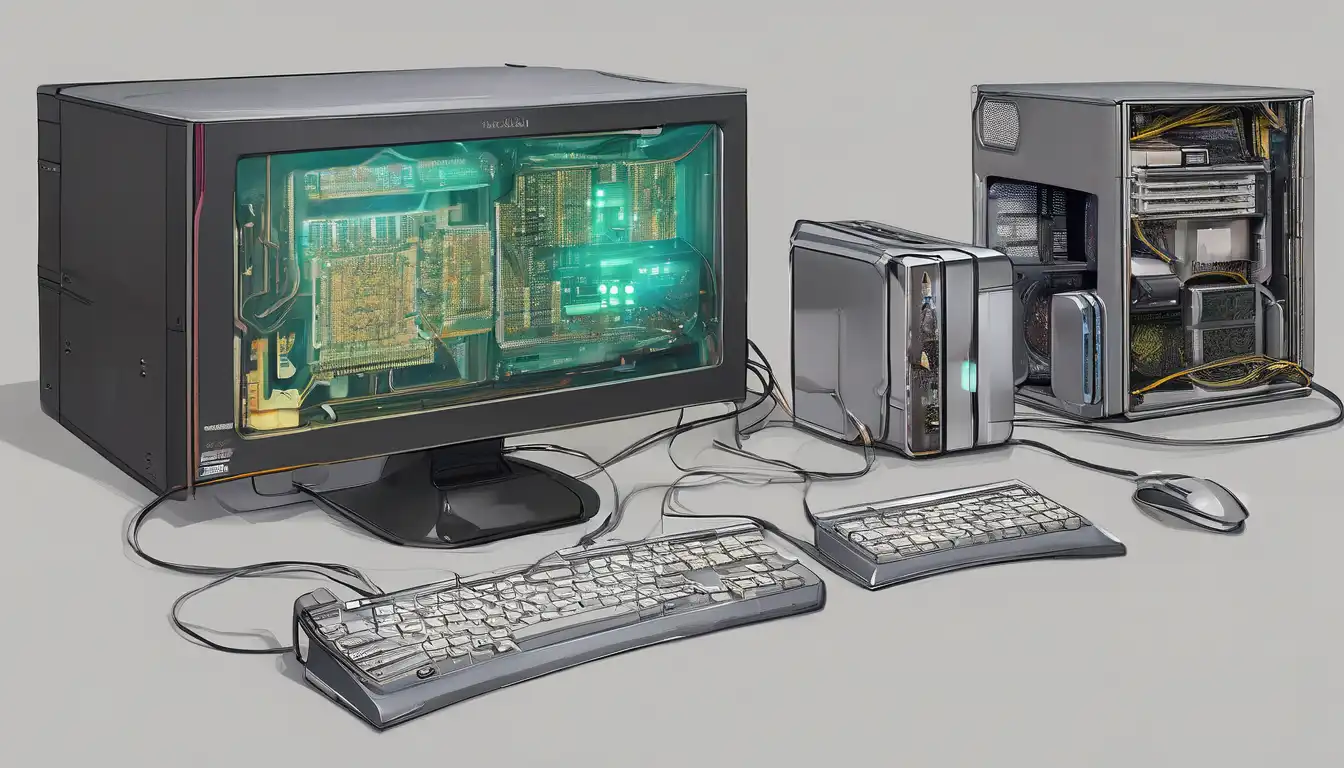Revolutionary Advances in Computer Hardware Technology
The landscape of computer hardware technology is undergoing unprecedented transformation, with innovations emerging at an accelerated pace. From quantum computing breakthroughs to AI-optimized processors, the hardware sector is pushing boundaries that were once considered science fiction. These advancements are not only enhancing computational power but also redefining how we interact with technology in our daily lives.
Next-Generation Processors and Computing Architecture
The processor market has witnessed remarkable evolution with the introduction of 3D stacking technology and chiplet designs. Major manufacturers like Intel, AMD, and Apple are leveraging advanced manufacturing processes below 5nm, delivering unprecedented performance per watt. The shift towards heterogeneous computing architectures combines high-performance cores with efficiency cores, optimizing power consumption while maintaining peak performance.
Quantum computing represents the most revolutionary frontier in processing technology. Companies like IBM and Google are making significant strides in developing stable quantum processors capable of solving complex problems that traditional computers cannot handle. These systems leverage quantum bits (qubits) that can exist in multiple states simultaneously, opening new possibilities in cryptography, drug discovery, and climate modeling.
Memory and Storage Innovations
Storage technology has seen dramatic improvements with the widespread adoption of NVMe SSDs and the emergence of storage-class memory. The latest PCIe 5.0 interface doubles the bandwidth of previous generations, enabling read/write speeds exceeding 10,000 MB/s. This advancement is particularly crucial for data-intensive applications like video editing, gaming, and scientific computing.
DDR5 memory represents another significant leap forward, offering higher bandwidth and improved power efficiency compared to DDR4. With speeds starting at 4800 MT/s and scaling beyond 8400 MT/s, DDR5 enables smoother multitasking and better performance in memory-intensive applications. The technology also introduces on-die ECC (Error Correction Code), enhancing reliability for critical computing tasks.
Graphics and Display Technology Evolution
The graphics processing unit (GPU) market continues to innovate with real-time ray tracing and AI-powered upscaling technologies. NVIDIA's DLSS (Deep Learning Super Sampling) and AMD's FidelityFX Super Resolution use artificial intelligence to enhance image quality while maintaining high frame rates. These technologies are revolutionizing gaming, professional visualization, and content creation.
Display technology has advanced with mini-LED and micro-LED panels offering superior contrast ratios and brightness levels. The adoption of higher refresh rates (up to 360Hz) and resolutions beyond 4K provides incredibly smooth and detailed visual experiences. These developments are particularly beneficial for competitive gaming, graphic design, and medical imaging applications.
Cooling and Power Management Solutions
As components become more powerful, thermal management has become increasingly critical. Advanced cooling solutions including vapor chamber technology, liquid cooling systems, and phase-change materials are becoming mainstream. These innovations enable higher sustained performance while maintaining component longevity and reliability.
Power supply technology has evolved with the adoption of the ATX 3.0 standard, which introduces better power efficiency and support for high-power components. The new standard includes native support for PCIe 5.0 graphics cards and improved transient response capabilities, ensuring stable power delivery during sudden load changes.
Connectivity and Peripheral Advancements
The latest connectivity standards are transforming how devices communicate. Wi-Fi 6E and the upcoming Wi-Fi 7 offer significantly higher speeds, lower latency, and better network efficiency. Thunderbolt 4 and USB4 provide versatile connectivity options with speeds up to 40 Gbps, supporting multiple 4K displays and fast data transfer simultaneously.
Peripheral technology has seen substantial improvements with optical-mechanical keyboards offering faster response times and higher durability. High-precision gaming mice with polling rates up to 8000Hz provide near-instant response times, while VR controllers with advanced haptic feedback create more immersive experiences.
Emerging Technologies and Future Trends
Several emerging technologies promise to reshape the hardware landscape further. Neuromorphic computing, which mimics the human brain's neural structure, offers potential breakthroughs in AI processing efficiency. Photonic computing, using light instead of electricity for data transmission, could revolutionize processing speeds and energy efficiency.
The integration of AI directly into hardware components is another significant trend. AI-accelerated processors and dedicated neural processing units (NPUs) are becoming standard in modern devices, enabling on-device machine learning capabilities without relying on cloud services. This development enhances privacy and reduces latency for AI-powered applications.
Sustainability and Environmental Considerations
Hardware manufacturers are increasingly focusing on sustainability, developing energy-efficient components and using recyclable materials. The industry is moving towards modular designs that allow easier upgrades and repairs, reducing electronic waste. Many companies are implementing carbon-neutral manufacturing processes and developing more efficient power management systems.
The adoption of renewable energy in data centers and the development of low-power computing architectures contribute to reducing the environmental impact of technology. These efforts align with global sustainability goals while maintaining performance standards that users expect from modern hardware.
Impact on Various Industries
The latest hardware innovations are transforming multiple industries. In healthcare, advanced computing power enables real-time medical imaging analysis and drug discovery simulations. The automotive industry benefits from powerful processors for autonomous driving systems and in-vehicle infotainment. Educational institutions leverage these technologies for virtual laboratories and interactive learning experiences.
Content creation and entertainment industries are particularly affected by these advancements. High-performance hardware enables real-time rendering of complex visual effects, 8K video editing, and immersive virtual reality experiences. The gaming industry continues to push hardware boundaries with increasingly realistic graphics and physics simulations.
Conclusion: The Future of Computer Hardware
The rapid pace of innovation in computer hardware technology shows no signs of slowing. As we look toward the future, we can expect further integration of AI capabilities, more efficient power management, and continued miniaturization of components. The boundaries between different types of computing devices will continue to blur, with unified architectures serving multiple purposes.
These advancements promise to make computing more accessible, powerful, and integrated into our daily lives. As hardware technology continues to evolve, it will enable new applications and experiences that we can only begin to imagine today. The future of computing hardware is bright, with innovations that will continue to transform how we work, create, and interact with technology.
